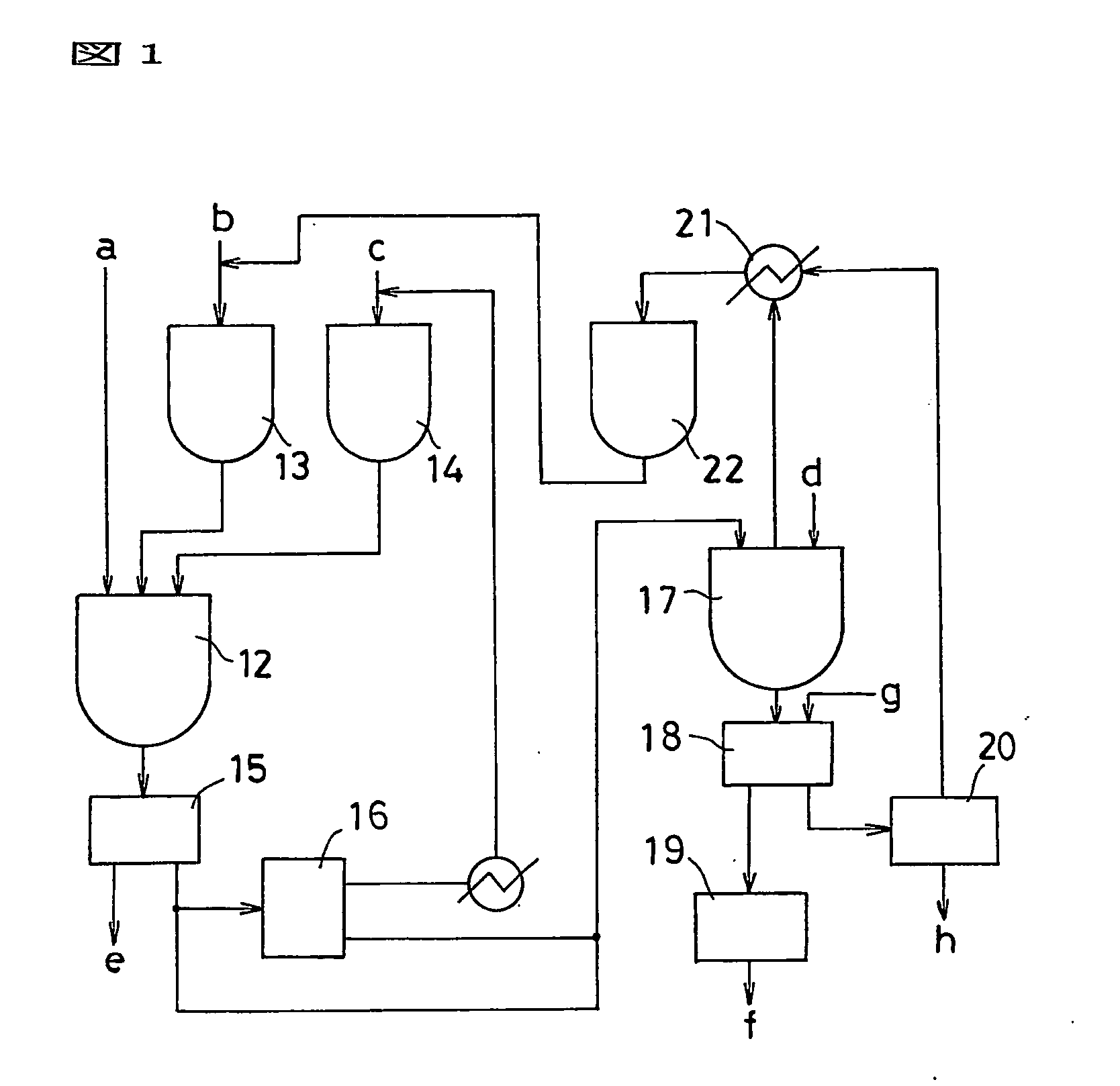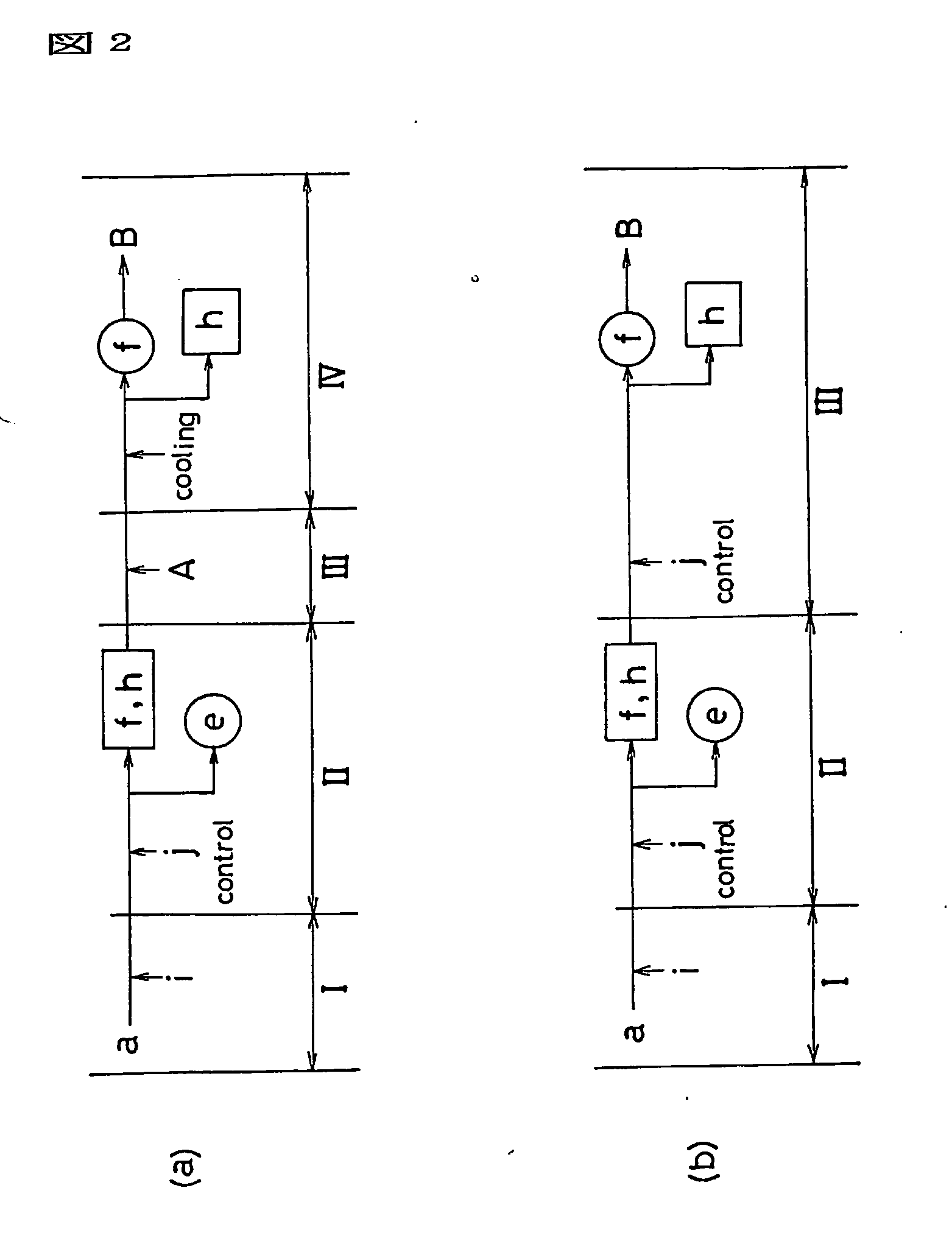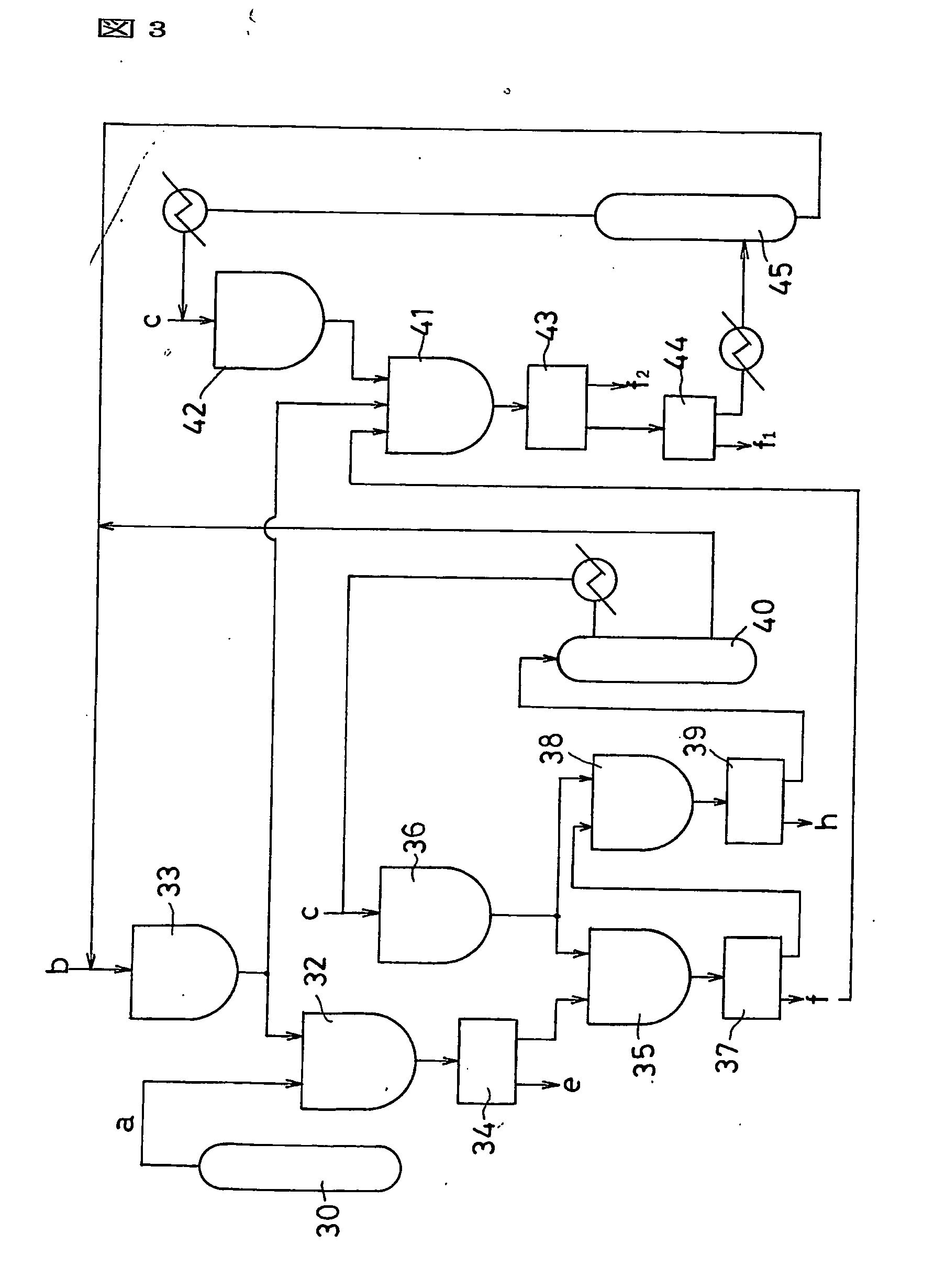Process for production of fullerenes and method for separation thereof
a technology of fullerene and process, applied in the field of process for producing fullerene, can solve the problems of toluene being subjected to incomplete combustion under controlled conditions
- Summary
- Abstract
- Description
- Claims
- Application Information
AI Technical Summary
Benefits of technology
Problems solved by technology
Method used
Image
Examples
example 1
Step D-2+Step E-4
[0250] 10.3 g of a fullerene-containing mixture (containing 1.13 g of C60 to C96 as fullerenes, 9.17 g of carbon black) which had been prepared using fullerenes and a carbon-based polymeric component was charged into a 1-liter messflask, and 286.16 g of tetralin was added thereto. The mixture was extracted with stirring at normal temperature for 30 minutes while applying an ultrasonic wave. Subsequently, 399.6 g of ethanol was added with stirring, and the mixture was allowed to stand still for 5 minutes. Then, 76 g of the suspension was charged into each centrifuge tube for centrifugation. Thereafter, vacuum filtration was conducted with a filter of 0.45 μm. The resulting solution was applied to a rotary evaporator to evaporate ethanol. Then, the pressure was decreased and the temperature was increased to evaporate tetralin so that the solution was saturated. 0.0099 g of C60 was added as a seed crystal, and the mixture was cooled to normal temperature to obtain 95....
example 2
Step E-2
[0251] 10.2 g of a fullerene-containing mixture (a total of C60 to Cs80 as fullerenes was 11.1% by weight) which had been prepared using fullerenes and polycyclic aromatics was charged into a 1-liter eggplant type flask, and 286 g of tetralin was added thereto. The mixture was extracted with stirring at normal temperature for 30 minutes while applying an ultrasonic wave. Then, 76 g of the extract was charged into each centrifuge tube for centrifugation. To the resulting extract was added 1,000 g of ethanol with stirring, and the mixture was allowed to stand still for 5 minutes to precipitate an insoluble matter. The solution having the insoluble matter precipitated therein was centrifuged, and vacuum filtration was then conducted with a filter of 0.45 μm. The resulting precipitate was charged into a 100-milliliter eggplant type flask, and 10.0 g of tetralin was added to redissolve the precipitate. 14.3 g of ethanol was added to the redissolved solution while stirring, and t...
example 3
Step D-2+Step E-2
[0252] 9.311 kg of a fullerene-containing mixture (a total of C60 to C80 as fullerenes: 12.0% by weight, polycyclic aromatics: 1,775 ppm) which had been prepared using fullerenes and polycyclic aromatics was charged into a 100-liter GL reaction vessel R-501. 87.0 kg of 1,2,4-trimethylbenzene was added thereto, and the mixture was extracted at 40° C. for 1 hour with stirring. The mixture was filtered with a GL pressure filter, and a residual solid matter was washed three times while spraying 10 kg of 1,2,4-trimethylbene thereto. The resulting solution was then concentrated to a solution amount of 34.0 kg in a 350-liter GL reaction vessel R-703 at 60° C. and 10 torr. 126.0 kg of isopropyl alcohol was added to the concentrate for 2 hours with stirring, and the mixture was aged as such for 1 hour. Subsequently, the crystallized component was filtered with a GL pressure filter, and the residual solid matter was washed once while spraying 28.0 kg of isopropyl alcohol the...
PUM
| Property | Measurement | Unit |
|---|---|---|
| solubility | aaaaa | aaaaa |
| solubility | aaaaa | aaaaa |
| temperature | aaaaa | aaaaa |
Abstract
Description
Claims
Application Information
 Login to View More
Login to View More - R&D
- Intellectual Property
- Life Sciences
- Materials
- Tech Scout
- Unparalleled Data Quality
- Higher Quality Content
- 60% Fewer Hallucinations
Browse by: Latest US Patents, China's latest patents, Technical Efficacy Thesaurus, Application Domain, Technology Topic, Popular Technical Reports.
© 2025 PatSnap. All rights reserved.Legal|Privacy policy|Modern Slavery Act Transparency Statement|Sitemap|About US| Contact US: help@patsnap.com



